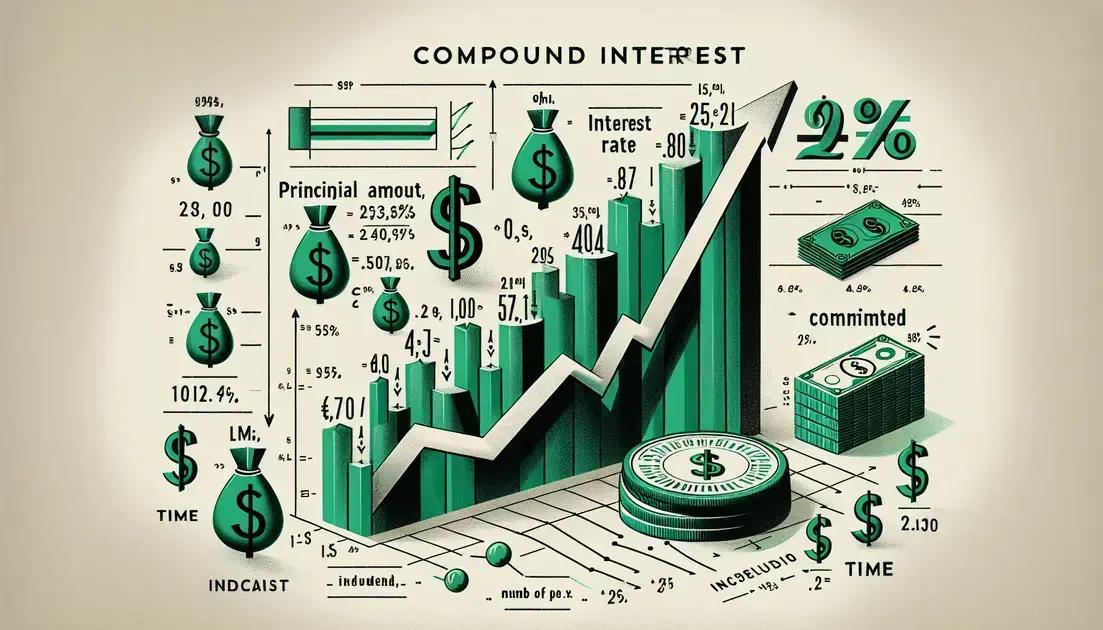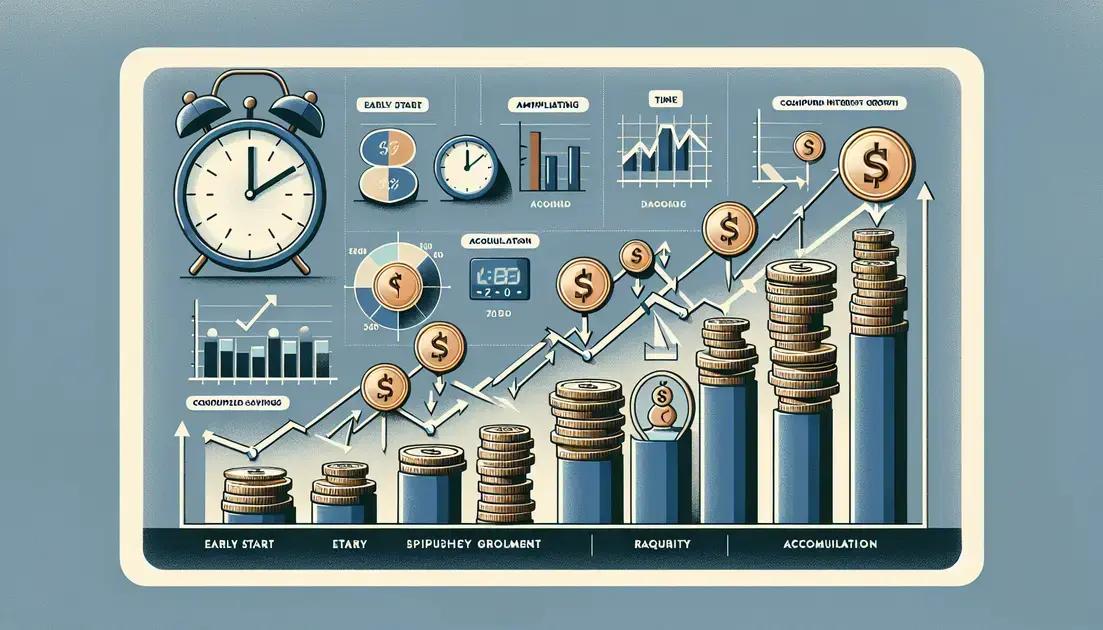Unlocking the Power of Your Savings
Advertising
Compound interest is the secret to making your money work harder and grow faster. This powerful concept not only helps you save effectively but also transforms your future financial health. In this post, we will explore how compound interest can maximize your savings and provide you with the tools to succeed.
Understanding Compound Interest Basics
Understanding Compound Interest is essential for anyone looking to grow their savings effectively. This concept revolves around the idea that interest is calculated not just on the initial principal but also on the interest that has been added to it over time. This means that as your investment earns interest, it generates even more interest.
How Does It Work?
Imagine you put $1,000 in a savings account with an annual interest rate of 5%. In the first year, you earn $50 in interest. In the second year, however, you earn interest on the new total of $1,050, which is $52.50. This cycle continues, and over the years, your money can grow exponentially.
The Benefits of Compound Interest
One of the biggest advantages of compound interest is that it can significantly increase your savings over time. The longer your money is invested, the more interest you earn, compounding your growth. This is why starting to save early is crucial to maximizing your returns.
Comparing Simple Interest and Compound Interest
It’s also helpful to understand the difference between simple interest and compound interest. With simple interest, you only earn interest on the original amount you invested. In contrast, with compound interest, your earnings grow as your interest earns interest, leading to much greater overall returns.
Key Takeaways
In summary, understanding compound interest basics will help you make informed financial decisions. Whether you’re investing in a savings account, stocks, or bonds, knowing how your interest compounds can guide you toward effective savings strategies and financial success.
The Formula for Compound Interest

The formula for compound interest is essential for understanding how your savings can grow over time. The formula is expressed as:
A = P(1 + r/n)^(nt)
In this formula:
- A = the amount of money accumulated after n years, including interest.
- P = the principal amount (the initial amount of money).
- r = annual interest rate (in decimal).
- n = the number of times that interest is compounded per year.
- t = the time the money is invested or borrowed for, in years.
Breaking Down the Formula
Let’s look at how to use the compound interest formula in practice. Assume you invest $1,000 with an annual interest rate of 5%, compounded annually for 10 years.
Using the formula:
A = 1000(1 + 0.05/1)^(1*10)
Calculating it step by step:
- Calculate 1 + r/n: 1 + 0.05/1 = 1.05
- Raise it to the power of nt: 1.05^(1*10) = 1.62889
- Finally, multiply by P: A = 1000 * 1.62889 = $1,628.89
Understanding the Components
Each component of the formula plays a vital role. The principal amount is where your growth starts. The interest rate determines how quickly your investment can grow. The compounding frequency can also affect your total returns—more frequent compounding leads to higher amounts.
Why It Matters?
Using the compound interest formula allows you to see the potential of your investments over time. Understanding how to manipulate the formula can help you strategize your savings and investments efficiently.
Real-Life Applications of Compound Interest
Real-life applications of compound interest show how this financial principle is key to building wealth over time. Many people may not realize that they encounter compound interest in their daily lives.
1. Savings Accounts
One of the most common examples is through savings accounts. When you deposit money in a savings account, your bank pays you interest on your balance. This interest is often compounded, which means you earn interest on both the money you deposited and the interest that accumulates, helping your savings grow faster.
2. Retirement Accounts
When saving for retirement, compound interest plays a crucial role. Accounts like 401(k)s and IRAs often use compound interest to help your money grow. The earlier you start contributing to these accounts, the more time your investments have to compound, leading to larger retirement savings.
3. Investments
Investing in stocks or bonds also relies on compound interest. When you reinvest your dividends or interest payments instead of cashing them out, your investment compounds over time. This strategy can lead to exponential growth in your investment portfolio and major financial gains.
4. Education Funds
Education savings accounts, such as 529 plans, use compound interest to help parents save for their children’s education. By contributing regularly and allowing the investment to grow with interest compounding, families can accumulate funds for tuition and related expenses.
Compound interest is everywhere once you start to look for it. Understanding its applications can help you take better control of your finances and plan for a secure future.
Tips to Maximize Your Compound Interest Growth

Unlocking the Power of Compound Interest
Understanding and applying the principles of compound interest is essential for anyone looking to enhance their financial future. By grasping the basics, utilizing the formula, and exploring real-life applications, you can make informed decisions about your savings and investments.
Maximizing your compound interest growth involves actionable steps such as starting early, investing regularly, and choosing high-interest options. By being patient and monitoring your progress, you can significantly increase your wealth over time.
Ultimately, utilizing the power of compound interest can lead to substantial financial benefits, making it a valuable tool in your financial strategy. Take control of your finances today, and watch your savings transform and grow.




